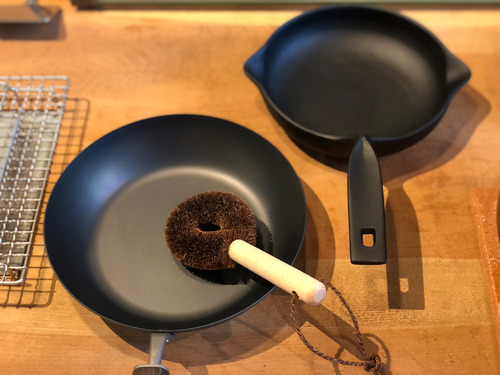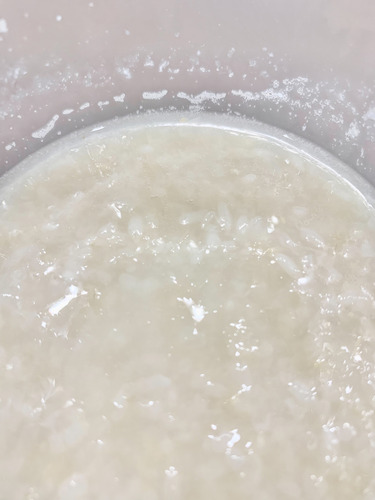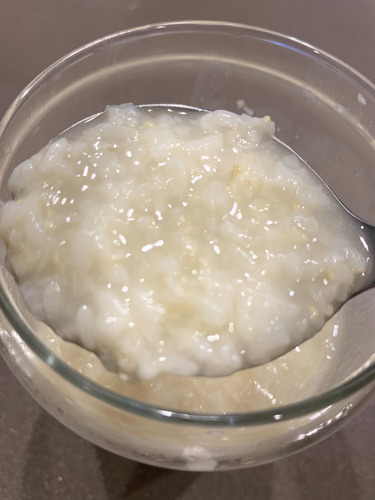
[****** for Frying Pan]
The characters in ****** are "tawashi" (scrubbing brush). A tawashi for frying pans. However, this is a little different from the common scrubbing brushes you know.
The material of the tawashi, hemp palm, has a part called "devil's hair" which is especially hard. These bristles do not get damaged even if the pot is washed with a little or a lot of force.
The tawashi has a beech handle for easy holding, and thanks to its perfect angle, it is easier to exert force than holding the tawashi with bare hands. It can even be used to remove sticking residue from clay pots and grill pans.
You will especially appreciate it when you have small scratches on your fingers, when you don't want to damage your nails, or when you are worried about rough hands. Our staff likes it so much that she washes almost all frying pans and pots with this frying brush. Hanging it up for easy drainage and hygienic storage.
A dedicated tool may be something that can be substituted for something else, but there is a reason why it is dedicated. That is because they are easy to use, have a slightly outstanding feel, or solve small inconveniences in daily life.
Takada Kozo Shoten's Scrubbing Brush for Frying Pan Beech Handle
https://www.shokunin.com/en/kozo/tawashi.html
FD Style's Frying Pan Compact
https://www.shokunin.com/en/fdstyle/fryingpan.html
Rikucho Ogasawara's Frying Pan
https://www.shokunin.com/en/rikucho/fryingpan.html
Sanjo Showroom
https://www.shokunin.com/en/showroom/sanjo.html


